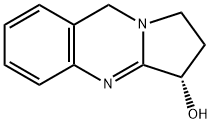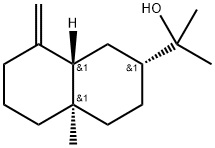PRODUCT Properties
| Melting point: | 211.5°C |
| Boiling point: | 323.23°C (rough estimate) |
| Density | 1.1124 (rough estimate) |
| refractive index | 1.5850 (estimate) |
| storage temp. | 2-8°C |
| solubility | DMSO : 83.33 mg/mL (442.70 mM; Need ultrasonic) |
| form | Powder |
| pka | 13.08±0.20(Predicted) |
| color | White to off-white |
Description and Uses
This quinazoline alkaloid was first isolated from the leaves of Adhatoda vasica
Nees by Hooper and subsequently discovered in Peganum harmala under the
name Peganine. The base is optically inactive although Spath and Kesztler have
reported the isolation of the (-)-form from the fresh leaves of A. vasica and
Rosenfeld and Kolesnikow have obtained the same form from the flowers and
stems of Peganum harmala. The salts are readily obtained crystalline, e.g. the
hydrochloride dihydrate, m.p. 208°C (dry); hydriodide dihydrate, m.p. 195°C
(dry); picrate, m.p. 199°C (dec.) and the methiodide, m.p. 187°C.
With AcOH, the alkaloid gives an anomalous acetyl derivative, m.p. 165°C,
subsequently shown to be N-acetylpedadiene. Oxidation with KMn04 gives
4-quinazolone and 4-keto-3 :4-dihydroxyquinazolyl-3-acetic acid, the latter
characterized as the methyl ester, m.p. 152°C.
The crude drug from A. vasica is used in India as a remedy for asthma while
the pure alkaloid acts as a bronchodilator.
Safety
| Symbol(GHS) |  GHS07 |
| Signal word | Warning |
| Hazard statements | H302-H315-H319-H335 |
| Precautionary statements | P261-P305+P351+P338 |
| Hazard Codes | Xn |
| Risk Statements | 22 |
| RIDADR | 1544 |
| HazardClass | 6.1(b) |
| PackingGroup | III |





